Octopuses are cephalopods, a class of marine animals that are part of mollusks.Equipped with eight arms covered with suckers and a muscular body with no bones or shells, they are endemic to our oceans.About 200 species are distributed throughout the marine waters of the world.
Although our last common ancestor with them dates back to 500 million years ago, when we study them, they show some disturbing similarities to us.
Behind their staring eyes, their brains work surprisingly similar to ours, and their curiosity and desire to explore remind us of our thirst for knowledge, they are endowed with
impressive intelligence defined cognitive abilities.
Cognitive skills can be defined as the processes through which information from the environment is perceived, processed, transformed, stored and then used to make decisions and act.
Numerous studies on octopuses show that they have great flexibility in their behavior, both in their natural environment and in a laboratory aquarium.
Let’s first take the example of the defense mechanisms in octopuses.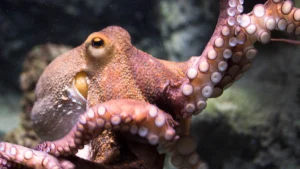
Faced with their multiple predators, octopuses are an ace in camouflage.
They can mimic their environment by changing the color and texture of their skin instantly and in a variety of ways, thanks to pigmented cells called chromatophores and multiple muscles covering their epidermis.
In the absence of a shell, octopuses are very vulnerable.
This is why they try to hide, preferably in a hollow-shaped shelter under a rock: octopuses organize and maintain their refuge by removing sand and adding stones and shells to better close the entrance.
Others prefer to cover themselves with mud or shells to hide, and some even carry their refuge in their arms, a behavior that is considered the use of a tool.
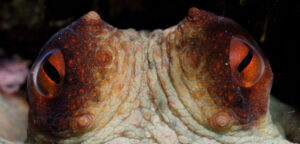
Octopuses are also formidable predators.
Their attack mechanisms are adapted to the great variety of prey they consume: all types of molluscs and crustaceans, but also fish and even other cephalopods.
They can use their vision and camouflage to hunt, or their arms to explore, touch and taste the environment and grab any food at hand.
They may have interspecific interactions to hunt and cooperate with certain fish, especially groupers, to find hidden prey.
When consuming crustaceans and molluscs, octopuses can force the shell to open, possibly by sliding a small stone to block the closure, or by injecting a paralyzing toxin that will allow the shell to open easily.
The toxin is inoculated into a very precise muscle after the shell is pierced and the octopus must learn and remember where to pierce each shell, they have no bones and can easily escape through even the smallest hole.
They excel in discriminatory learning: when they are presented with two objects, they learn to attack one in exchange for a reward, based on its characteristics, such as color, shape, texture or flavor. Invertebrates – Common Corals in Bayahibe – Dominican Republic
They can retain this learning for several months and are also able to generalize, a complex task that requires spontaneously expanding the learned rule to new objects based on their similarities (size, color, roughness) to those previously encountered.
They show conditional discrimination, that is, they can change their choice depending on the context: for example, they can learn to attack an object only in the presence of bubbles in their environment and to hold back in their absence.
Octopuses can learn by watching their mates.This is surprising, because they are animals described as predominantly solitary (although communities have occasionally been observed).
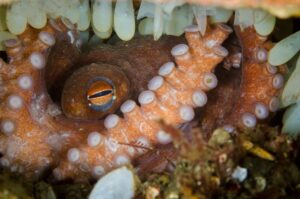
There is also a sad part of this magnificent creatures life… the octopus mother and her extreme
gesture…
Would you have ever thought that among the mothersof the year candidates could be an octopus? Well that’s
right, it’s the giant Pacific octopus, really making an extreme sacrifice for its little cephalopods.
The giant pacific octopus reproduces only once in its life and the females take over a month to lay around 50,000 eggs,
which it will take care of for the following six months, completely giving up on itself. Until the babies
are developed, the mother will carry the eggs hanging from her body, taking care of them completely, without
eating, constantly monitoring the eggs and blowing water on them to oxygenate them.
When her babies are ready, shortly after the eggs hatch, the mother is ready for the big moment. It literally shoots its young into the sea, pushing them with a jet of water. But taking care of them cost her a lot, in fact everything. In fact, the female of this octopus is literally exhausted and dies soon after. She will never know that of her 50,000 offspring only two will survive
on average.

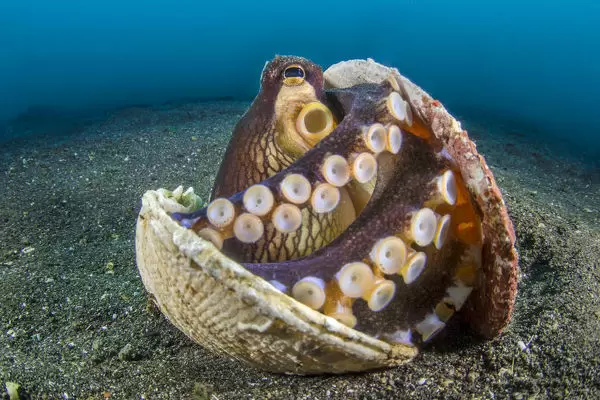
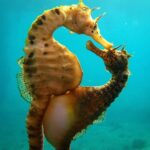
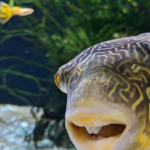


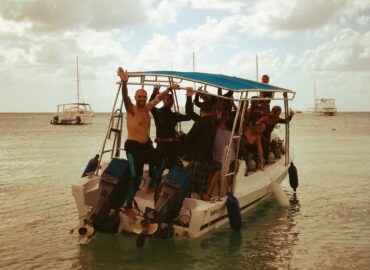

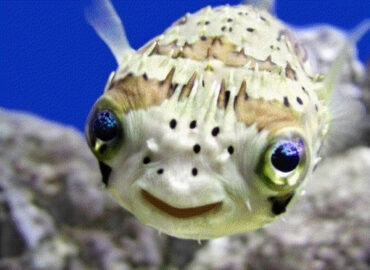
 WhatsApp us
WhatsApp us